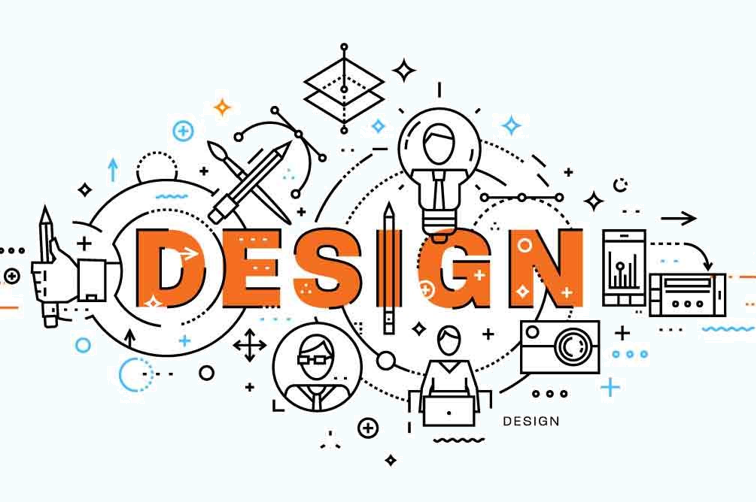A logo can make or break a business. Due to how a logo is used to represent your business’s image, personality, and quality, a poorly put-together logo can be detrimental and ruin your new business before it’s even off the ground.
Efforts should be put in when making a new logo, and it’s advisable to bring someone in who has experience with the medium. There are a lot of things that you can add to your logo that can make it look rubbish, so before we go into more detail, here are a few do’s and don’ts.
Do separate images from text
Plenty of average logos have text within the logo design; however, it’s better if you keep these separate as this allows the logo to become more of a sharable icon. It also ensures that the text is clear.
Don’t add too much color
Too much color can make your logo appear busy and hard to read. It can also make it hard to transfer from one medium to another. It’s best to stick to two or three colors to keep it looking neat.
Do your initial designs in black and white
There will be moments in your business’s lifetime when you won’t be able to use the full-color version of your logo, so when first making it, it’s best to ensure that it will still look slick in grayscale. To ensure it suits this lack of color, print it in black and white and assess how it looks. If it’s fuzzy or illegible then it’s going to have to be reworked.
Don’t pick the wrong font
The font is important, as it’s a tool that can identify your brand and your logo. However, to ensure that your font is good, be sure it can be read easily on different mediums, in different colors, and in different sizes. You also want to make sure that the font matches other print materials used on your site or branding. You don’t want a logo that jars with the rest of your imagery.
Study Current Logos
The good thing about starting a new business is that there are plenty of other businesses, brands, and enterprises that have come before you. It’ll be in your best interest to learn from these current businesses and imitate and innovate from the successful ones and learn from the mistakes of those that may have failed. All the top worldwide companies have good logos, and this is because they all meet five especially important pieces of criteria. If you are going to create and build a successful brand, then implementing these hallmarks will help you create a memorable logo that customers can begin to easily associate with your product. These five metrics are:
Simplicity
The best logos are simple, clean, sharp, and not too complex. This lack of complexity isn’t just there to help it stay memorable and appealing, but it’s also useful when replicating the logo on merchandise, as it makes it easy to reproduce and keeps costs down.
Memorability
Good logos stick in the mind, and when making your logo, you want to ensure that it’s something that won’t be easily forgotten.
Purposeful
Your logo is a representation of your brand, so you do not want to just conjure up any old piece of rubbish. You want to make sure your design elements relate to your business mission and evoke the company’s personality. A good logo will bring up certain emotions when people see it.
Timeless
You don’t want to create a logo that may get dated over time or use any imagery that has the potential to become controversial. You should be okay if you avoid referencing current events or technology. Some bad examples of logos that got worse over time include the Washington Redskins, who had to alter their logo due to public outcry, which has seriously harmed the brand.
Versatility
The best logos make sure they are easily transferable to different mediums. A logo with gradients, shading and fine lines may look great digitally but will struggle to look good in print or on merchandise like caps and tees. Ensure that your logo looks great everywhere it needs to be.
Color is Important
The color scheme of your logo is vital, as color is the most powerful tool designers have to impose desired emotions and reactions to a brand. There is a reason the Twitter logo is blue and that the Target one is red. This is down to the science of color psychology and is basically the concept of how different colors make us feel.
So, when choosing a color for your logo, think about how it changes how you perceive it and what emotions it evokes. A good technique when deciding your color is to create a document with various color options so that you can compare the logos and figure out which one bests suits you.
The following list is a simple overview of what some of the most popular colors are used to represent. However, it’s important to know that color goes even deeper than the examples given, and pairing colors together can completely change the subconscious meaning of your logo. Always, go for the best logo design company in the world
Red
Red is strongly associated with excitement, so it is used by a lot of brands that want to grab your attention. It also has minor associations with passion, energy, action, and danger, which makes it perfect for toy companies such as Lego and theme parks.
Red also encourages appetite, which is why a lot of restaurants use red walls to entice guests to eat more. this is also why food and drink brands like Coca-Cola and Mcdonald’s use red, too.
Red is an intense color and is one of the first that the eye is drawn to, making it a great color for a call to action (like an order now button or sale icon on your website).
Yellow
Yellow is most heavily associated with happiness, positivity, and optimism, and can be a great way to make your brand appear more positive. It’s also often used with luxury brands such as Ferrari to encourage people to buy their products, as the logo suitability suggests that customers will be happier with this vehicle.
Orange
Orange is used a lot for creative brands as it represents creativity, enthusiasm, and success. It’s considered a playful color, so it suits brands such as the children’s cartoon channel Nickelodeon extremely well. It’s also used often for schools or educational spaces as it encourages more brain activity than any other color.
Green
Green has strong connections to nature, peace, and health, but it is also strongly associated with money and finance. This makes it a good color to add to fitness brands. It’s also a relaxing color, as it’s the easiest for our eyes to see, meaning it can go great with spas or even holiday camps or travel agents.
Blue
Blue is one of the most widely used colors online, especially with social media. Facebook, Twitter, LinkedIn, and even the now-dead MySpace used blue in their branding and website layout. The reason is simple: blue is a color that evokes a feeling of trustworthiness and stability — things that social media sites are desperate to portray in their brand.





